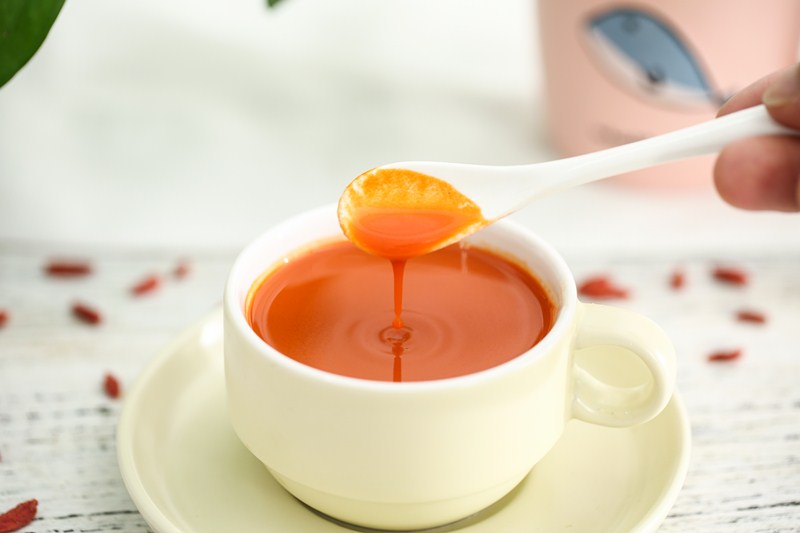Wheat stripe rust is one of the wheat rust diseases and it is an important disease that spreads widely in wheat production, spreads quickly, and is harmful. In wheat rust, wheat stripe rust is the most serious and should be noticed. The following describes the main symptoms of this disease, the occurrence characteristics and prevention methods.
The main symptoms
Wheat stripe rust mainly occurs on leaves, followed by leaf sheaths and stems, and spikes, glumes and awns also occur. At the seedling stage, multiple round-shaped arrays of fresh yellow summer spores were generated on the leaves of the seedlings. When the leaves of adult plants develop, the uredia spores are small strips, bright yellow, oval, parallel to the veins, and arranged in rows. Like the stitches rolled by the sewing machine, they appear as a dashed line, and the epidermis ruptures and the embroidered toner appears. In the case of near-mature wheat, a round to ovoid-shaped dark brownish summer spore mass appeared on the leaf sheath, emitting a bright yellow powder, namely the summer spores. The late disease department produces a black phosporus heap. The teliospore pile is short-lined, flat, and has a constant fusion. It is buried in the epidermis and does not crack at maturity, unlike wheat stem rust.
Incidence conditions
Wheat stripe rust is mainly caused by the annual infestation cycle of wheat spores on wheat. At present, no pathogenic host has been found. The infestation cycle can be divided into four links: "Summer, Infested Autumn Seedlings, Overwintering and Spring Prevalence". Wheat stripe rust is overwintering in the diseased leaf in the form of hyphae, becoming an important source of bacteria in the spring wheat field. After the turn of wheat in the following year, the mycelium in the overwintering disease leaf revived and expanded. When the average temperature rises to 5°C in the late tenth, the disease develops sporulation. In the event of spring rain or condensation, the disease spreads and spreads rapidly, causing spring endangerment. Drought, long time without rain, no exposure, disease expansion is often interrupted. Therefore, the incidence of spring drought in the year-round and the year when the temperature rises too fast and the temperature is too high is generally mild. In spring and rain, most of the regions with long-term hypothermia are mostly affected.
Control methods
Wheat stripe rust is an airborne disease. Therefore, comprehensive prevention and control strategies should be adopted to plant disease-resistant varieties, supplemented by health-care cultivation and chemical control, so as to effectively prevent and control its harm. The comprehensive measures are: (1) Select disease-resistant varieties that are suitable for local cultivation to avoid the simplification of species, but not too much, and pay attention to regular rotation to prevent loss of resistance. (2) Strengthen agricultural control, such as appropriate sowing. (3) Do a good job of chemical control. First of all, we must do a good job of seed dressing: wheat seed dressing before seeding with wheat, can also be used 25% triadimefon WP 15 g mix wheat seed 150 kg, followed by timely spring leaf control: wheat jointing or booting Diseased leaf rate of 2% to 4%, when the severity of 1%, timely use of 20% triadimefon per acre WP 1000 ~ 2000 times to control wheat rust, leaf blight, sheath blight and so on. Note: When spraying, it should be even and thorough, to prevent leakage of spray, spray to the positive and negative sides of the blade.
Qixiang is the best Organic Goji Berry Juice manufacturer, we are the first organic goji berry supplier in Ningxia. And we have 1920mu organic goji berry farm which ensures Qixiang can provide the high quality organic Goji Berry Juice, organic Goji Juice. Our organic goji juice has been exported to all over the world such as US, Netherland, France, Germany, England and many other countries for many years.

Appearance
1) Color: Orange or orange red
2) Taste & Odor: Fresh Goji Berry juice taste and smell after sterilization, no peculiar smell.3) Histomorphology: The product is turbid, allowing precipitation stratification after standing.
4) Impurity: No visible foreign impurities
Physics & Chemical Specification
1) Brix(%): ≥13.0
2) Total Acid(g/100mLas Citric Acid): ≥0.5
3) pH: 3.5-4.1
Microorganism Specification
1) TPC (CFU/mL): ≤20
2) Yeast (CFU/mL): ≤20
3) Mould (CFU/mL): ≤1
4) Coliform (CFU/mL): ≤1
Additive
Citric acid and Vitamin C
Country of Origin
ZHONGNING, NINGXIA, CHINA
Package
1) Inner package is 200kgs aseptic bag, outer package is opening steel drum.
2) Inner package is 25kgs aseptic bag, outer package is opening steel drum.
Storage
Should be stored at room temperature in clean, cool, dry warehouse, prevent sun, rain, and not be stored with corrosive, toxic, and smelly item. With these conditions, product shelf life is 18 months. (suggestion: 5-8℃).
Organic Goji Berry Juice
Organic Goji Berry Juice,Organic Wolfberry Juice,Organic Fruit Berry Juice,Import Organic Goji Berries Juice
Ningxia Qixiang Biologic Foodstuff Co., Ltd. , https://www.qxgoji.com